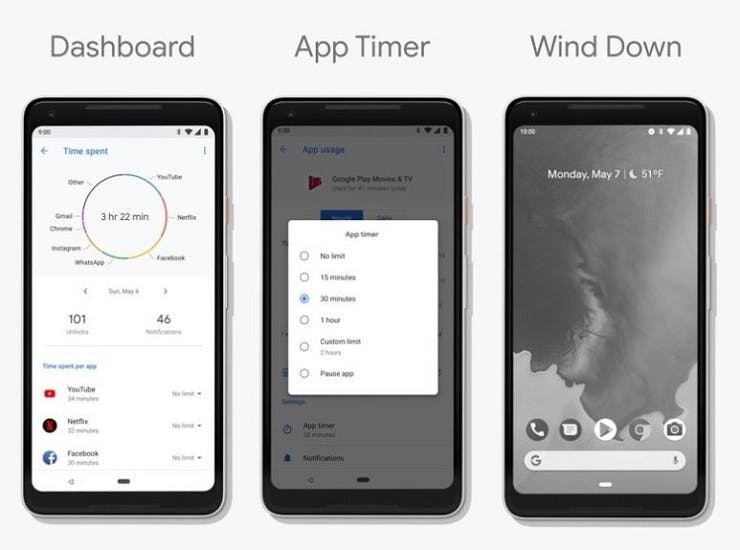This sounds like typical millennial behaviour, right? A demographic that want everything or nothing at all? Perhaps, but it’s an interesting concept, and one which could help brands to better understand what makes consumers tick – and how to create engagement that lasts.
Here’s more on Kantar’s theory, plus insight into what we can learn from it.
Saturation and screen overload
Kantar suggests that technology (and a constant stream of digital news and entertainment) has led to an ‘on or off’ style of engagement, with consumers constantly struggling between the desire to stay connected or to switch off.
We’ve all been there. After a day of staring at a computer screen, when was the last time you went home and did something other than spend time staring at another screen – be it a television or your smartphone?
Alongside a desire to switch off, Kantar also suggests that this had led to people consuming content in ‘microbursts’, i.e. in an increasingly fractured way. This means that, if a person is disengaged in that moment, they might scroll endlessly through social media without taking in a single post.
This theory also applies to constantly switching the TV channel, absent-mindedly flicking through a magazine, or skipping songs on Spotify.
While, in theory, it’s a marketer’s job to make people stop in moments like these, the notion of ‘torrential engagement’ means it is now infinitely harder to achieve.
A binge-watching culture
In contrast to this disconnection, an increase in technology usage can also lead consumers to display high-intensity engagement. The most obvious example is with streaming services like Netflix, which in itself has created its own culture of ‘binge-watching’ – whereby people are engaging with content for intense periods.
kay, let’s take it to a vote. “last night i was…
— Netflix UK & Ireland (@NetflixUK) May 22, 2018
Other forms of on-demand content as well as ecommerce platforms have played a part too, with consumers now wired to accessing whatever they want – whether that’s movies, music, podcasts, or products – whenever they want it.
This level of autonomy (which ad-blockers also take to another level) also means that if consumers aren’t actively choosing to participate in a brand interaction, they are probably less likely to be open to receiving it.
How can brands flip the switch? How can they connect with consumers who display this extreme style of (dis)engagement?
Reward high-intensity interactions
Kantar suggests that brands should forget about changing or interrupting torrential engagement. Rather, that they should accept engagement whenever it comes, and reward customers based on its intensity rather than longevity.
The popular gaming app HQ Trivia falls in line with this notion, offering users big rewards for short bursts of intense engagement. Players are only required to use the app twice a day for a short period of time, ensuring that they are always highly engaged (rather than on a much lower yet more consistent basis).
it’s a family thing @hqtrivia pic.twitter.com/YkFBeOhXGV
— becca (@lilhappybecca) May 22, 2018
Similarly, while many brand loyalty schemes reward users over long periods of time, make-up brand KIKO gives users extra points for on-the-spot interaction, such as leaving reviews and sharing purchases on social media. By doing so, it ensures higher engagement, and leaves users with a positive and memorable outcome.
Align with behaviour
Interestingly, Kantar also suggests that brands should align with different levels of engagement, even making low-level engagement (or autopilot behaviour) a priority.
Amazon Dash (however successful it has been) is cited as an example here, with the technology deliberately designed so that consumers need little or next-to-no thought process while using it.
Another interesting example is how Google is now designing technology to align with the desire to switch off. At the recent Google IO conference, it announced how the next version of Android (known as Android P) will deliberately give users ways to not use their phone.
For example, it will display how much time has been spent in an app, and involve a ‘wind down’ mode that will turn all apps to grayscale after a set bedtime.

Google has described this new ethos as a shift from ‘FOMO’ (fear of missing out) to JOMO (joy of missing out), with the brand not only rewarding disconnection but actively encouraging and championing it.
Create real-world experiences
Finally, brands should consider experiential marketing as a way to capture meaningful consumer engagement. This is because these in-person experiences tend to be isolated, short, and highly interactive – effective for capturing attention regardless of how readily engaged a person might be.
Moreover, richer real-world experiences tend to be far more memorable than digital ones, alongside the fact that there’s no easy ‘off’ switch when it comes to human interaction.
On the back of offline experiences, EventTrack reports that consumers are more likely to display online engagement, and continuing the cycle, it also suggests that 72% of consumers are more likely to purchase from a brand after seeing a friend post about it online.
Refiney29 is one example of a brand that is adept at shifting consumer engagement from experiential to digital. Social media is intrinsic to its 29Rooms event – before, during and after it occurs.

By building hype and creating share-worthy experiences, the brand ensures users will be far more likely to engage when they scroll past one of its posts on social in future – successfully tapping into the notion of so-called ‘torrential engagement’.
Related articles:

Comments